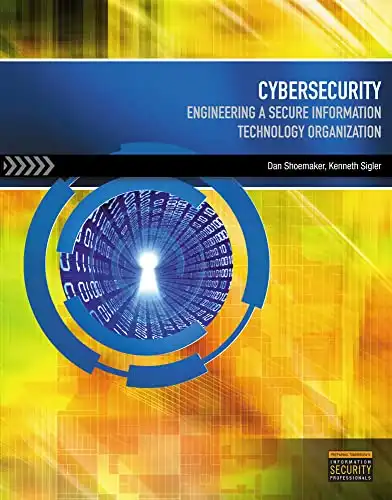We may receive compensation when you click on product links from our partners. For more information, please see our disclosure policy.
From the early days of e-commerce to the present, online security has been a constant concern. Initially, simple passwords and basic encryption were considered adequate.
However, as technology has evolved, so too have the methods used by cybercriminals. This continuous arms race has led to the development of increasingly sophisticated checkout technologies to protect online transactions. These new methods offer enhanced security by addressing the weaknesses of earlier systems.
In this article, we will discuss the key innovations that make online transactions safer and more secure for consumers and businesses.
Traditional Security Measures
Traditional security measures have long formed the foundation of online transaction protection. These methods, while still relevant to some extent, have demonstrated limitations in the face of increasingly sophisticated cyber threats.
The most common traditional measures include usernames, passwords, and CAPTCHAs (Completely Automated Public Turing test to tell Computers and Humans Apart). Usernames serve as identifiers, while passwords are intended to provide exclusive access to accounts.
These basic security measures offer minimal protection. They are no longer enough to safeguard online transactions. That’s why for businesses looking to enhance their online security, choosing a reliable ecommerce checkout platform is crucial. As you know, your online store must have an SSL certificate, and all your pages must be securely encrypted. By choosing such a platform, you’ll protect your customers and yourself as they provide the security you need. These also offer a secure and easy-to-implement checkout process to keep your customers and store safe.
Discover how cutting-edge checkout technologies are revolutionizing online security, protecting your payments and data like never before. Stay informed and shop smarter! #OnlineSecurity #TechInnovationClick To TweetEmerging Checkout Technologies
New checkout technologies are revolutionizing online transaction security. They offer better protection against fraud and cyber threats. These new methods improve traditional security measures. They better protect businesses and consumers.
Biometric Authentication
This technology utilizes unique biological traits for user verification. Fingerprint scanning, facial recognition, and voice recognition are common examples.
Biometrics offer a strong layer of security as these traits are difficult to replicate. This method significantly reduces the risk of unauthorized access, as it requires physical presence or a live sample of the biometric data.
Tokenization
Tokenization replaces sensitive cardholder data, such as credit card numbers, with unique, randomly generated tokens. These tokens process transactions. So, the actual card details are never stored on the merchant’s servers or sent during the transaction. This greatly reduces a data breach’s impact. Even if the tokens are compromised, they cannot access the original card information.
Multi-Factor Authentication (MFA)
MFA adds an extra layer of security by requiring users to provide multiple verification forms.
This often means combining:
- something the user knows (a password),
- something the user has (a code sent to their phone or an authenticator app), or
- something the user is (biometric data).
Even if one factor is compromised, the attacker still needs to bypass the other factors to gain access. This makes it significantly harder for unauthorized users to access accounts or complete fraudulent transactions.
Blockchain Technology
While still emerging in the checkout space, blockchain technology offers a decentralized and transparent ledger for recording transactions. Each transaction is grouped into a “block,” which is then cryptographically linked to the previous block, forming a “chain.”
This creates a tamper-proof record of all transactions, making it extremely difficult for fraudsters to alter or manipulate data. Blockchain can enhance security by providing greater transparency and traceability in online transactions.
Benefits of Enhanced Security
Better security in online transactions, from advanced checkout tech, benefits businesses and consumers.
- Increased Consumer Trust: Strong security measures boost consumer confidence. They assure users that their financial data is safe. This trust encourages more online shopping and fosters stronger customer relationships.
- Improved Brand Reputation: Implementing strong security measures enhances a business’s reputation and credibility. Consumers are more likely to trust and do business with companies that prioritize online security. A secure checkout process becomes a key differentiator in a competitive market.
- Protection of Sensitive Data: These technologies directly protect sensitive customer data like credit card numbers, addresses, and personal information. This protection mitigates the risk of data breaches, which can have severe consequences for both individuals and businesses.
- Reduced Operational Costs: Advanced security may need some initial investment. But, it can lower costs tied to fraud investigations, chargebacks, and security-related customer service.
Concluding Thoughts
Checkout technologies are crucial for safer online transactions. They protect valuable data and build trust between buyers and sellers. Methods like biometrics, tokenization, and MFA make it much harder for criminals to steal information.
These advancements lead to fewer fraud losses, better brand reputations, and increased customer confidence. By embracing these security measures, businesses create a safer and more reliable online shopping experience. The future of online commerce depends on continuous improvement in checkout security.
This groundbreaking book provides a uniquely comprehensive guide to software security, ranging far beyond secure coding to outline rigorous processes and practices for managing system and software lifecycle operations.




